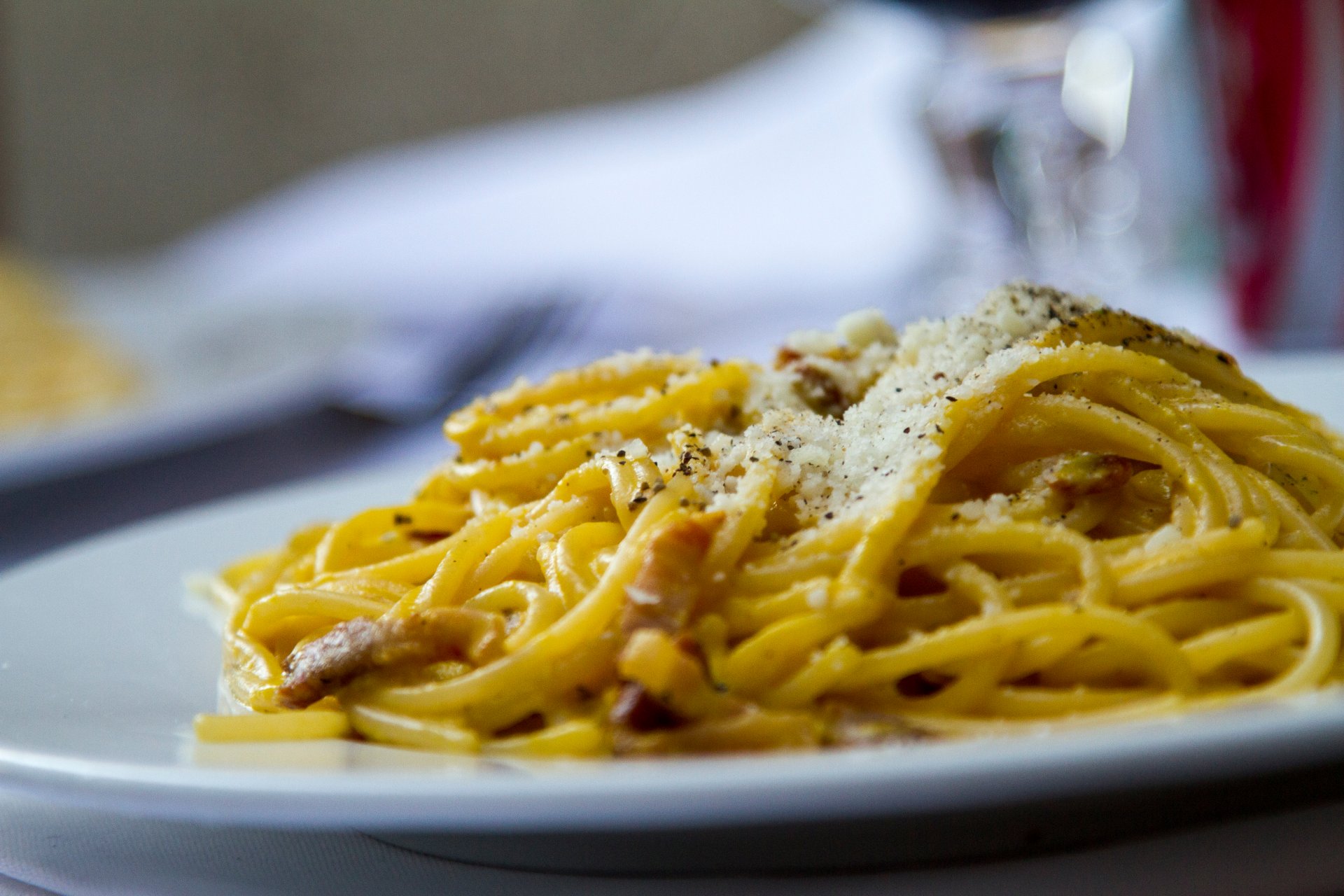Disclaimer: This post may contain affiliate links, but all content is based off our own opinions and experiences. We may receive a commission from purchases made through the links enclosed at no additional cost to you!
One of my first immersive experiences of traveling was five weeks studying abroad in Rome, Italy. And what an experience it was! Every day on my way to the study center, I walked through Campo de’ Fiori and took in the surroundings: people bustling by, locals shopping at the farmers market, the sound of Italians speaking their beautiful language, and especially, the smell of delicious Italian food (I’m drooling thinking about it). Small Italian restaurants line the perimeter of the square. A bakery sits on the corner emitting the scent of fresh-baked bread. I always LOVED Italian food, but those five weeks gave me my first taste of authentic Italian cuisine and the food culture of Italy.
Since food is one of my favorite aspects of traveling, I aim to appreciate it in every country I visit. Yet, none of my experiences with food quite match that which I had in Italy (and not only because of how delicious it was). The food culture of Italy is vital to Italian culture as a whole; a traveler can only immerse themselves by understanding and appreciating that.
Eating as a social activity
Unlike the culture that I’m familiar with, eating is a social activity for Italians. Having a meal is not only the physical act of eating but about being together with good company. Meal times revolve around the food, wine, and conversations. Whereas dinner might be an hour long in the U.S., it is meant to be a more leisurely few hours in Italy. Italians even structure their menus to reflect that with a typical Italian meal consisting of three courses: the anti-pasto (or appetizer), primi (first plate), and secondo (second plate). Even after, the meal may end with cheese, dessert, fruit, or a digestive like coffee or limoncello.
Without having a good understanding of this aspect of Italian food culture, tourists may become frustrated at the pace within restaurants. No, a restaurant does not have bad service because they take a while to take your order, serve your food, or bring your bill. In fact, at most restaurants, you must specifically ask for your bill. This is actually a way of the waiter being respectful of your leisure and social time rather than rushing you. Being mindful of this during a meal will help ease feelings of annoyance from both you and your waiter.
Italian food as a conversation topic
Food is such a beloved topic in Italy, that you can even hear small talk about it amongst strangers. Whereas someone in the U.S. might have small talk about sports, politics, or the weather, Italians can carry an hour long conversation about food. These conversations can be pleasant or… not so pleasant. I never experienced any such scenario, but I heard stories about people getting into heated conversations about food. And I thought I was passionate about food
Italian food and family
One of the reasons that Italians feel passionate about food is because of the strong connection between food and family. This is something that I was quick to learn when studying the culture and history of Italy. You can see the connection between food and family throughout history where family gatherings often centered around food. Mealtimes were traditionally used to strengthen family bonds. Even today, it is an expected custom among extended families to come together to eat as often as possible. Several family-owned restaurants even pride themselves in using family recipes, some of which have been around for centuries.
Italian pride in food
Tourists should remain conscious of the fact that Italians pride themselves in their food. I learned this the hard way. When I visited Naples with a group of friends, we knew we had to try the famous Neapolitan pizza. Don’t get me wrong, we ate PLENTY of pizza up until then, but not pizza from Naples. We strolled into this small, authentic pizza restaurant and looked at the menu in bewilderment. I mean, we practiced the Italian language, but not enough to understand pizza ingredients. We figured that we would try our hand at communicating what we wanted with the waiter. We spent about five minutes trying to ask for pizza with some type of meat on it. You know, like ham or sausage or pepperoni (which I later learned doesn’t exist in Italy). When we finally communicated what we wanted to the waiter, he replied “that’s disgusting”.
If we weren’t marked as tourists before, we definitely were now! It seemed as if we offended him, and knowing what I know now, I understand why. We weren’t aware of what was custom, and it portrayed us as ignorant Americans. I learned to avoid asking for anything not listed on the menu or for extreme customizations to my food (like adding meat to pizza). Even asking for parmesan cheese for your food (unless offered) can offend Italians. In reality, the Italians are the professionals and know how the food is best served. My advice is to trust it, and enjoy!
I encourage anyone traveling to Italy to gain a strong understanding of the customs and traditions, especially those surrounding Italian food culture. While I like to say that I learned a lot about the Italian culture, I only scratched the surface. I look forward to visiting again, eating more Italian food, and further learning to appreciate the food culture of Italy.


Leave a reply